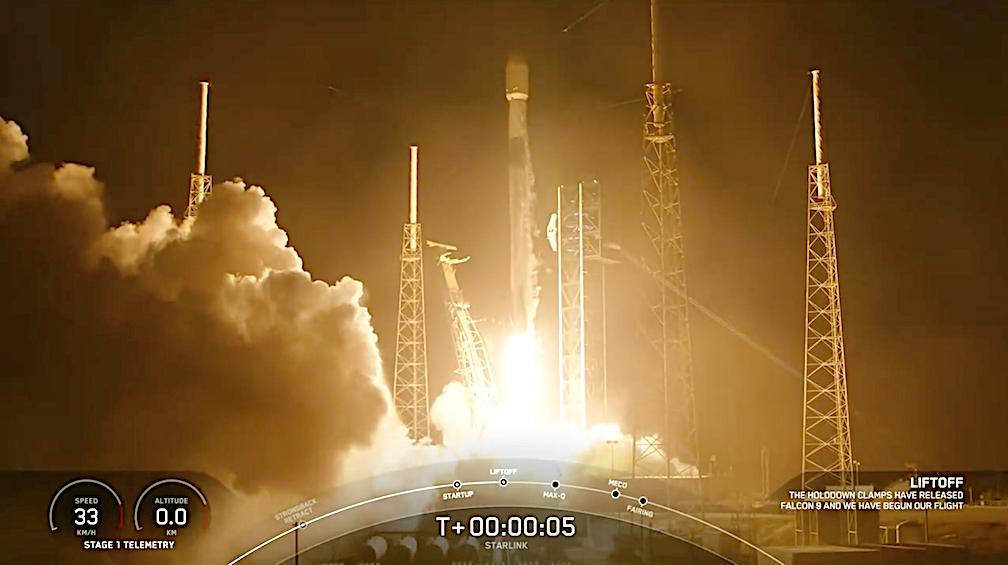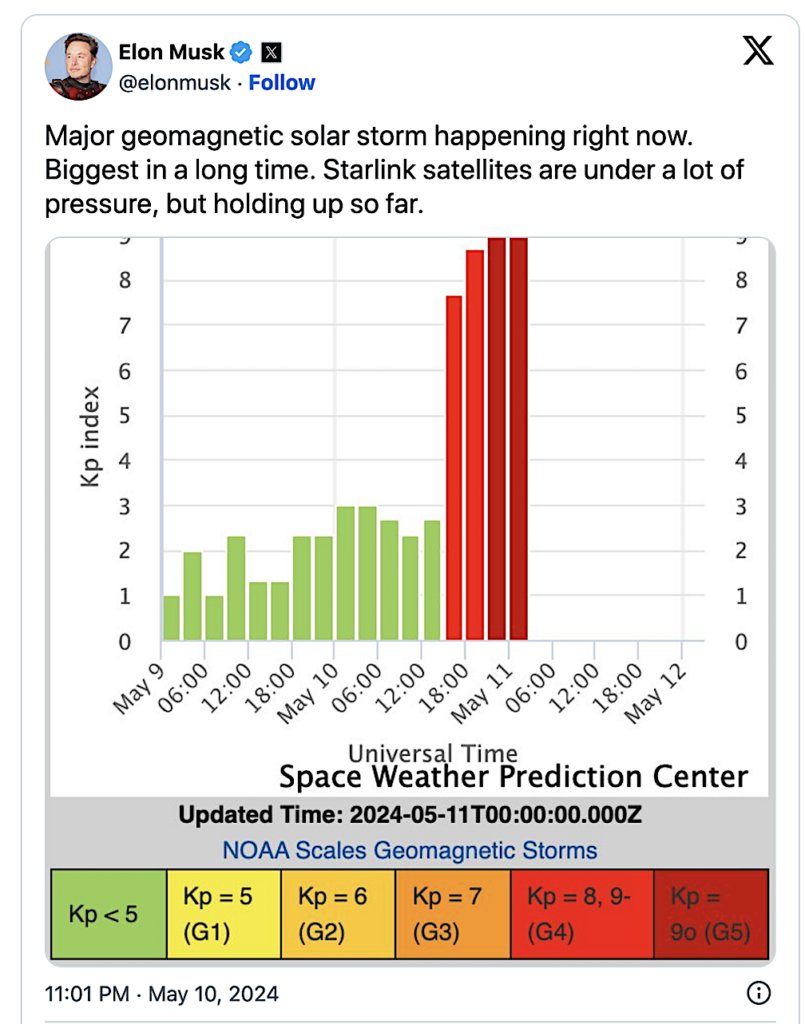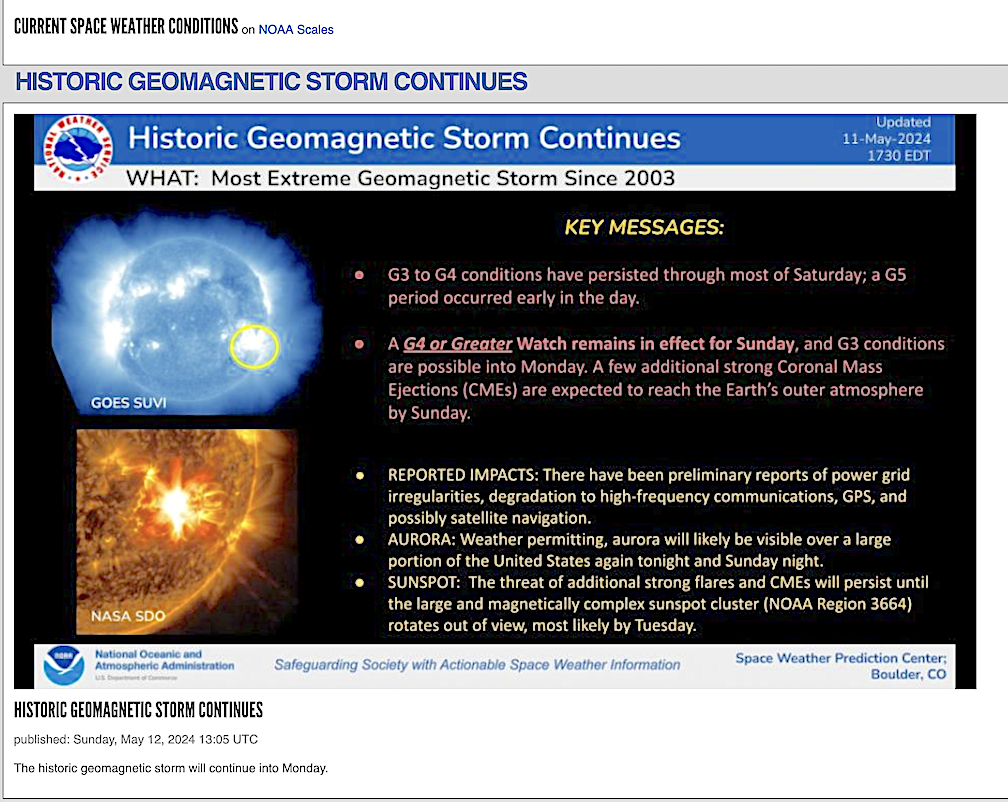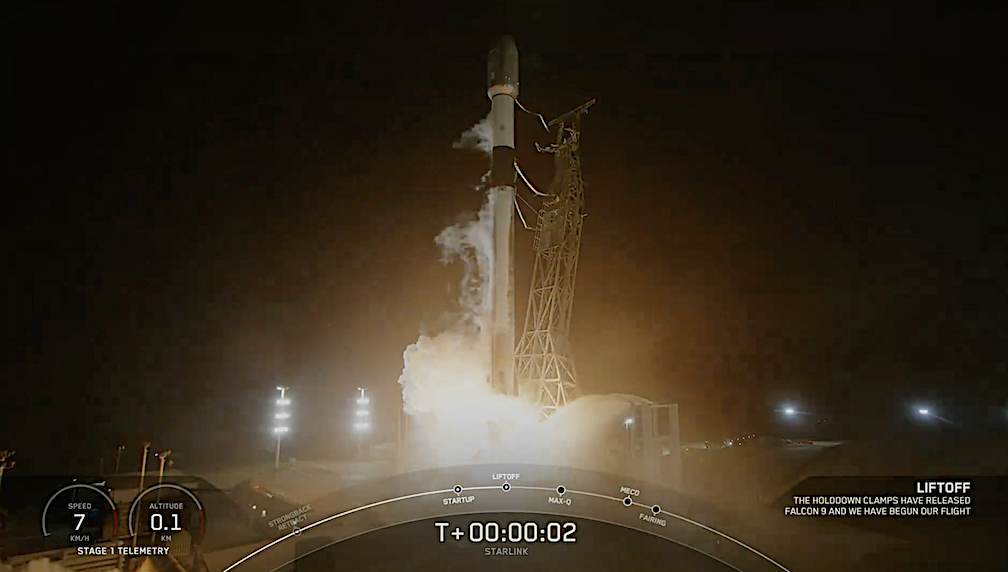
It was textbook perfect as SpaceX’s Falcon 9 blasted off at 8:53 p.m. EDT from Cape Canaveral Space Force Station in Florida, on Sunday, May 12, 2024 despite the threat of complications from an historic geomagnetic solar storm.
The launch took place despite a weekend of solar activity that NOAA classified as the “most extreme geomagnetic activity since 2003” that brought auroras as far south as Florida. On Friday, the National Oceanic and Atmospheric Administration (NOAA) noted that at least five coronal mass ejections were observed by NOAA’s Space Weather Prediction Center to that point.

As of Sunday morning, the SWPC said that a “G4 or Greater Watch” remained in effect for May 12, noting the possibilities of “severe to extreme geomagnetic storming is possible again later today.”

In a post on his social media site, X (formerly known as Twitter), Elon Musk said that SpaceX was closely monitoring the impact of the solar storms on the Starlink constellation.
Stage separation took place with release of 23 Starlink small satellites two minutes and 34 seconds after launch.

The mission will bring the total number of Starlink satellite to 6,000 satellites in orbit, according to expert orbital tracker and astronomer Jonathan McDowell.

This is the 15th flight for the first stage booster supporting this mission, which previously launched SES-22, ispace’s HAKUTO-R MISSION 1, Amazonas-6, CRS-27, Bandwagon-1, and nine Starlink missions. Following stage separation, the first stage successfully landed on the A Shortfall of Gravitas droneship, stationed in the Atlantic Ocean.
SpaceX’s Sunday Starlink smallsats launch

SpaceX is targeting Sunday, May 12 for a Falcon 9 launch of 23 Starlink satellites to low-Earth orbit from Space Launch Complex 40 (SLC-40) at Cape Canaveral Space Force Station in Florida. Liftoff is targeted for 8:11 p.m. ET, with backup opportunities available until 12:11 a.m. ET on Monday, May 13. If needed, additional opportunities are also available on Monday, May 13 starting at 7:45 p.m. ET.
A live webcast of this mission will begin on X @SpaceX about five minutes prior to liftoff. Watch live
This is the 15th flight for the first stage booster supporting this mission, which previously launched SES-22, ispace’s HAKUTO-R MISSION 1, Amazonas-6, CRS-27, Bandwagon-1, and nine Starlink missions. Following stage separation, the first stage will land on the A Shortfall of Gravitas droneship, which will be stationed in the Atlantic Ocean.
